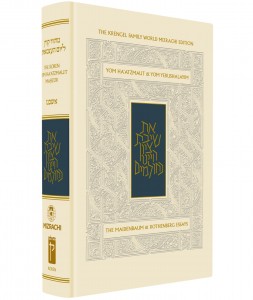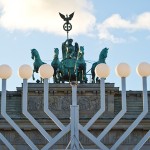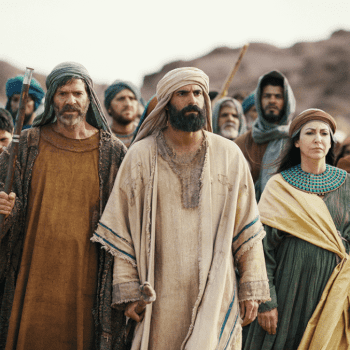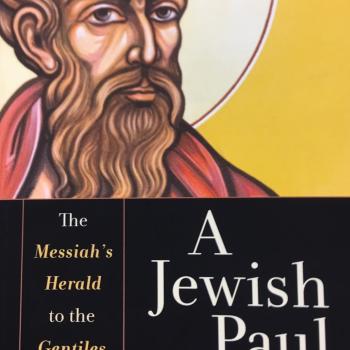I remember the first time I encountered the black cover siddur, prayer book, from Artscroll. I was well acquainted with the brown cover Artscroll prayer book but had not yet seen this edition before. What was different about it? The first thing I noticed was that it was the “Rabbinical Council of America (RCA) Edition”. An RCA prayer book seemed fascinating. The largest body of Centrist Orthodox rabbis in North America had collaborated with Artscroll to produce a new prayer book? What would be in it? How would it be different? The first thing I noticed was the eloquently written introduction by Rabbi Saul Berman. It was refreshing to see the words of a profoundly committed Modern Orthodox rabbi framing this siddur.
What else was different about the RCA Artscroll Prayer Book? As I scanned through the pages I found the next major difference between the standard Artscroll siddur and the RCA Edition, pages “a” and “b”! What were on these pages? The only significant addition to this RCA Edition was the inclusion of the prayer for the State of Israel. Indeed, the inclusion of this prayer did not even warrant its own full page but rather was almost an afterthought signified by its inglorious position on pages “a” and “b”.
 It is with that framing that helped inform my experience of joy and elation at receiving the Krengel Family World Mizrachi Edition of the new Koren Yom Ha’atzmaut Mahzor. An entire prayer book devoted to the pivotal days of remembrance and celebration of the State of Israel? There is not an “a” page or “b” page to be found anywhere in the book! Rather, the entire work permeates with a love of Eretz Yisrael and Medinat Yisrael, the land and State of Israel. This is not a naïve love but a love suffused with acknowledgment of the unique time the Jewish nation finds itself in.
It is with that framing that helped inform my experience of joy and elation at receiving the Krengel Family World Mizrachi Edition of the new Koren Yom Ha’atzmaut Mahzor. An entire prayer book devoted to the pivotal days of remembrance and celebration of the State of Israel? There is not an “a” page or “b” page to be found anywhere in the book! Rather, the entire work permeates with a love of Eretz Yisrael and Medinat Yisrael, the land and State of Israel. This is not a naïve love but a love suffused with acknowledgment of the unique time the Jewish nation finds itself in.
Throughout the commentary one can find analysis of the recitation of Hallel, the Psalms of praise, and on the place for liturgical innovation in Jewish law and thought. The Mahzor preserves the conceptual tension within the Modern Orthodox community about liturgical innovation by acknowledging and honoring the opposition of Rabbi Joseph Soloveitchik zt”l to liturgical changes as opposed to the Chief Rabbinate of Israel. This opposition stems not primarily from a deep chasmic ideological divide between the two positions but rather on a difference of opinion on our ability to modify the order of prayers. Rabbi Soloveitchik was consistent in his conservative approach to liturgy throughout all the prayers as the Mahzor notes when quoting Rabbi Menachem Genack, a close student of Rabbi Soloveitchik, who wrote: “In general, [the Rav] was conservative regarding the structure of the service… and was averse to changes in the traditional order and composition of the prayers.”
The gifts offered by this Mahzor though does not end with its exquisitely laid out design and commentary. When you flip the book around you will find thought provoking articles by the some of the leading lights in the Modern Orthodox community. Rabbis and thought leaders such as Rabbi Reuven Ziegler, Rabbi Jonathan Sacks, Rabbi JJ Schachter, Dr. Yael Ziegler, Rabbi Yehuda Amital zt”l, Rabbi Yoel Bin-Nun, Dr. Erica Brown and Rabbi Binyamin Lau among others offer essays that elevate the experience of the prayer and add intellectual depth to these new days of Jewish remembrance and rejoicing on the calendar.
One of the best ways to understand a faith community is by examining their prayer books. These books contain the collective hopes, dreams and theological aspirations of the community. For years prior to the entry of Koren Publishers into the English speaking market, the Modern Orthodox community sufficed with prayer books that relegated the essential place of Israel to pages “a” and “b” of their major prayer books and perhaps not even that. The publication of this new Mahzor for Yom Hazikaron, Yom Ha’atzmaut and Yom Yerushalayim confirms the fact that this is no longer the case. It uplifts the prayer experience every weekday and every Shabbat and holiday when one can not only enjoy a beautifully designed prayer book but one that aligns with a person’s deeply held values and convictions.
















